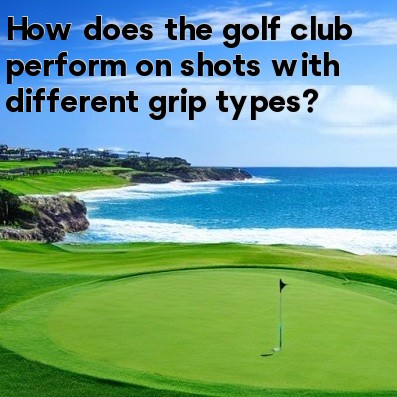
Golf Club Performance with Different Grip Types
Golf is a game that requires a combination of skill, technique, and precision. One crucial aspect of the game is the grip, which directly influences how the golf club performs during shots. Different grip types can have a significant impact on the accuracy, distance, and overall performance of a golfer's shot. Let's explore how the golf club performs with different grip types.
- Overlap Grip: The overlap grip, also known as the Vardon grip, is one of the most popular grips in golf. In this grip, the little finger of the trailing hand rests over the index finger of the lead hand. This grip provides stability and control, allowing golfers to maintain a solid connection with the club throughout the swing. With the overlap grip, golfers can achieve a consistent ball flight and generate exceptional power.
- Interlocking Grip: The interlocking grip is another widely-used grip technique. This grip involves interlocking the little finger of the trailing hand with the index finger of the lead hand. Golfers with smaller hands often find this grip more comfortable as it provides additional support and stability. The interlocking grip enhances the golfer's ability to control the clubface, resulting in better accuracy and shot dispersion.
- Ten-Finger Grip: The ten-finger grip, also known as the baseball grip, is a grip style commonly used by beginners or golfers with less hand strength. In this grip, all ten fingers are placed on the club, resembling the grip used in baseball or tennis. Although this grip may lack the stability and control offered by the overlap or interlocking grip, it can still produce remarkable results, especially for players with limited finger strength.
- Reverse Overlap Grip: The reverse overlap grip is a variation of the overlap grip, primarily used by golfers with larger hands or those who struggle with wrist mobility. In this grip, the index finger of the trailing hand rests over the little finger of the lead hand, reversing the position of the traditional overlap grip. The reverse overlap grip promotes better wrist hinge and a smoother release of the club, resulting in improved timing and consistency.
Regardless of the grip type, it is crucial to maintain a relaxed grip pressure to allow for proper wrist action and clubface control during the swing. Gripping the club too tightly can restrict the club's movement and decrease shot accuracy. On the other hand, gripping the club too loosely may lead to a loss of control and power.
In conclusion, the grip type used in golf has a direct impact on the performance of the golf club during shots. Whether it's the overlap grip, interlocking grip, ten-finger grip, or reverse overlap grip, each grip style offers unique advantages and benefits. However, it's essential to find the grip that feels comfortable and natural for each individual golfer. Experimenting with different grip types can help golfers discover the grip that works best for their game, improving accuracy, distance, and overall performance on the golf course.





